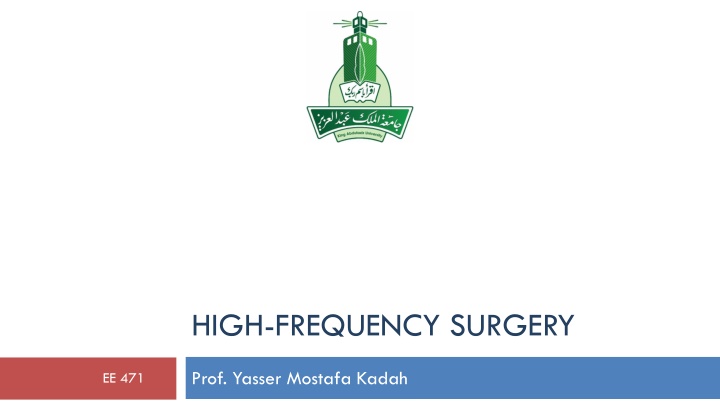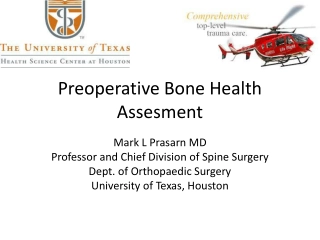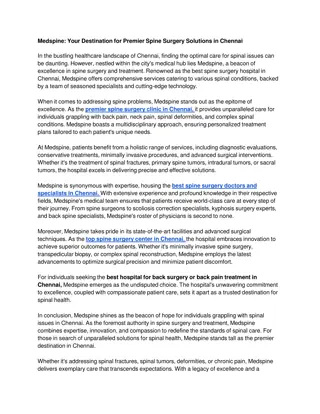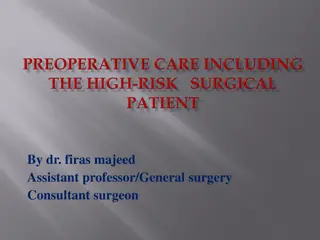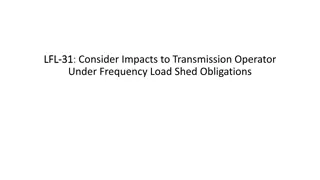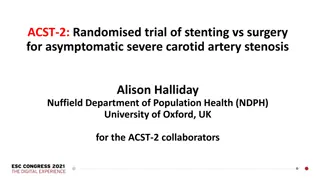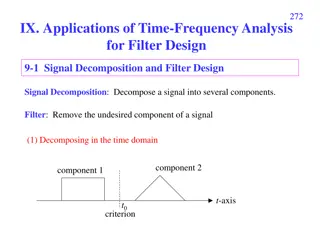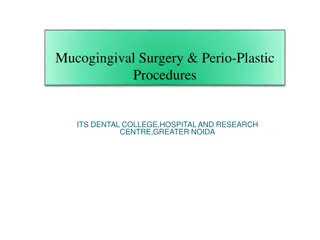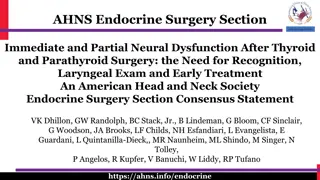High-Frequency Surgery: Applications and Effects
High-frequency (HF) surgery involves the application of electrical energy to induce thermal changes in tissue cells, used for hemostasis, cutting, and sealing in various surgical procedures. The technique prevents undesirable bioelectrical and biothermal effects like the electrolytic and faradic effects, focusing primarily on the desired thermal effect achieved through the conversion of electrical energy into heat for cutting and coagulation purposes.
Download Presentation

Please find below an Image/Link to download the presentation.
The content on the website is provided AS IS for your information and personal use only. It may not be sold, licensed, or shared on other websites without obtaining consent from the author.If you encounter any issues during the download, it is possible that the publisher has removed the file from their server.
You are allowed to download the files provided on this website for personal or commercial use, subject to the condition that they are used lawfully. All files are the property of their respective owners.
The content on the website is provided AS IS for your information and personal use only. It may not be sold, licensed, or shared on other websites without obtaining consent from the author.
E N D
Presentation Transcript
HIGH-FREQUENCY SURGERY Prof. Yasser Mostafa Kadah EE 471
Basics High-frequency (HF) surgery can be defined as application of electrical energy in surgery for effecting thermally induced change or destruction of tissue cells with aim of hemostasis (stopping bleeding), cutting tissue, or sealing it In HF surgery, high-frequency alternating current (preferably 0.3 4 MHz) is delivered by special applicators (or active electrodes) to tissue to be treated, where thermal tissue interaction takes place due to electrical resistance of tissue HF surgery devices have many synonymous names HF surgery RF surgery radiosurgery electrosurgery cautery electrocautery diathermy endothermy transthermy electrotomy Today, HF surgery has become indispensable tool for all surgical disciplines for inpatient or outpatient care
Bioelectrical and Biothermal Effects: Electrolytic Effect When electric current flows through biological tissue, bioelectrical and biothermal effects occur, depending on the type of current, current intensity, and frequency With DC and low-frequency AC currents, electrolytic effect dominates where ion migration takes place in tissue Positively charged ions travel to the negative pole (cathode) and negatively charged ions to the positive pole (anode) Effect is used in medicine in ionophoresis for transporting certain drugs into the body In HF surgery this effect is undesirable as tissue s cytochemical content can become damaged
Bioelectrical and Biothermal Effects: Faradic Effect When AC currents with frequency of up to 20 kHz flow through biological tissue, faradic effect occurs Currents stimulate nerves and muscle cells, leading to muscle contraction Stimulus effect peaks at frequencies between 10 and 100 Hz In HF surgery, this effect is undesirable as muscle contractions are painful, and possibly even dangerous for patient, and problem for surgeon Nernst law of electrical nerve stimulus threshold
Bioelectrical and Biothermal Effects: Thermal Effect With HF alternating currents, both electrolytic and faradic effects are largely prevented in biological tissue, and thus thermal effect dominates Frequency of alternating current is then at least 300 kHz This desired thermal effect is mainly used for two different applications: cutting and coagulation Amount of heat created in tissue mainly depends on specific resistance of tissue, current density, and duration of exposure Thermal effect is achieved through conversion of electrical energy into thermal energy Heat Q = I2 R t = V2 t / R (J)
Thermal Tissue Damage Regardless of method used to heat tissue (HF current, laser, ultrasound, etc.), thermal effects can be classified qualitatively as follows:
Heat Equations of Coagulation HF power Pcoag required for coagulation can be calculated by using both heat quantity Qcoag and coagulation time tcoag Heat quantity Qcoag depends on mass mcoag of tissue to be coagulated, specific heat capacity ccoag, and temperature difference tcoagwithin coagulum ( 37 C to 60 100 C) between start and end of coagulation period Depending on coagulation technique used, additional quantity of heat Qenv also must be taken into account to represent unintentional dissipation of heat in surrounding current- carrying tissues Qenv is negligibly small for bipolar coagulation in comparison with Qcoag Qenv can at times be very large relative to Qcoag in monopolar coagulation Qenv always poses risk of undesired secondary effects to take into account Explains higher power value in monopolar coagulation compared to bipolar
Heat Equations of Coagulation Heat created within active electrode during coagulation is QAE Temperature of active electrode should not rise during coagulation Creates layer of coagulum that can stick to active electrode If active electrode directly contacts coagulum, unavoidably heated Heat balance equation: Qcoag: heat quantity required for coagulation QAE: heat quantity for active electrode Qenv: unintended surrounding heat quantity Qtot: total heat quantity
Heat Equations of Cutting HF power PS required for cutting can similarly be calculated by using both heat quantity QS and the cutting duration tS as: When cutting, tissue volume proportional to length, average depth, and width of cut is heated so strongly that its water content vaporizes Heat quantity required for vaporizing water content in tissue (QS) consists of heat quantity Q100 to heat tissue fluid from 37 to 100 C plus heat quantity QD to evaporate boiling tissue fluid Heat balance equation: Heat quantity QU for unavoidable heating of tissue not involved in cutting and heat quantity for unavoidable heating of active electrode QAE
Current Density Effect Current density J plays key role in HF surgery Only if current density is sufficiently high (normal: 1 6 A/cm2) can desired cutting or coagulation effect be achieved Current density decreases quadratically with distance r Temperature increase decreases as r4 with distance r
Electrical Model of Biological Tissue Biological tissue mainly behaves like ohmic resistor Specific resistance in muscle tissue and well-vascularized tissue is low Specific resistance in tissues with little fluid content such as bones, cartilage, and fat have high specific resistance: low current flow
Monopolar Application Technique Active and neutral electrodes must be connected to HF surgical device with physical effects produced at active electrode Neutral electrode covers far greater skin contact surface area to ensure that current density (current per unit area) remains relatively low Active electrode has small contact area to produce high current density Neutral electrode also called: Plate electrode Passive return electrode Dispersive electrode Indifferent electrode (incorrectly) grounding electrode
Monoterminal Application Technique Circuit is closed via the patient s body capacitive contact to ground Special form of monopolar mode with no neutral electrode Increase in electromagnetic interference with other devices Technique safe only for small working currents, hence only suitable for minor surgical interventions, e.g., dentistry and dermatology Only units with maximum HF output power of 50W should be used Higher output power could cause severe patient burns
Bipolar Application Technique Both electrodes (active and neutral) in single instrument Current flows into tissue via one electrode and back via the other (no neutral electrode) Advantages compared to monopolar technique: Current only flows through tissue held between two electrodes where thermal effect is intended Danger of patient burns by touching conductive objects during operation is negligible Reduced influence on cardiac pacemakers Lower interference with other devices No stray currents
Types of Current and Their Application HF current effect determined by time, voltage, and modulation
Cutting Currents Tissue cutting only possible using HF current if voltage between active electrode and tissue is sufficiently high to generate electric sparks Distance small enough and minimum voltage of 200 V exceeded Quality of cutting depends on several factors Size and shape of cutting electrode great difference between large-blade electrode or microneedle Type of cut and cutting speed Whether cutting is superficial or deep, incision speed is fast or slow Tissue properties Tissues with low electrical resistance (muscles, vessels), output voltage may break down tissues with high electrical resistance (fat), effect is less
Coagulation Currents Aim of coagulation is to denature tissue using HF current, or to constrict vessels to an extent where bleeding stops Coagulation effect mainly depends on level and form of output voltage, the current density in tissue, tissue resistance, form and size of active electrode, and application time To coagulate biological tissue, temperature of 70 C is required At higher temperatures, glucose within coagulate dehydrates and tissue can stick to active electrode, and if higher carbonization of tissue result
Example: Spray Coagulation (Fulguration) Spray coagulation uses very high pulsed and strongly modulated output voltages of several thousand volts (up to 8 kV) used (crest factor up to 20) If user approaches tissue with small-area electrode (needle electrode) under spray voltage, air between tip and tissue is ionized at distance of 3 4 mm from tissue Via ionized air in electric field, spark discharges to tissue, followed by fur spark discharges spraying energy to tissue surface and coagulating relatively large tissue area With ball electrode, weaker electric field at same distance Increases as distance gets smaller and ionization of air with accompanying spark discharge only present at closer distance with ball electrode
Neutral Electrode (NE) In monopolar mode, thermal effect required exclusively at active electrode with no thermal reaction underneath (NE) To prevent patient burns, potential heating in NE application area must be kept below 6 C Correct attachment of NE to make absolutely sure it does not detach during operation Advanced systems offer NE monitoring technology that keeps proper NE attachment under constant control and disarms monopolar HF energy delivery if problem detected Original assumption that return flow of current from deep tissue layers was equally distributed across surface of neutral electrode was not correct Current distribution shows distinct current concentration at edges of NE (edge effect). Effect caused by layered structure of skin Dermis offering good conductivity over poorly conducting fat tissue layer If rectangular NE used, edge closest to target site offer least resistance Formation of hot spot Electrode as round as possible is therefore ideal
Rules for Proper Neutral Electrode Application Ensure good tissue contact (e.g., shaving hair for proper contact) Keep fluids away from the NE area, as these can adversely affect both adhesion and electrical properties of NE Do not reuse disposable (single-use) NE NE must not be trimmed or reduced in size Additional contact gel should never be applied to the NE Bony or uneven surfaces, implant sites, places with thick layers of fat (such as abdomen or buttocks), and scarred tissue are unsuitable for NE application Use contact quality monitor that requires exclusive use of split Nes
Lead Isolation Several possible strategies Grounded Referred to ground Isolated No isolation system is ideal
Reading Assignment Read Chapter 34 of Springer Handbook of Medical Technology
